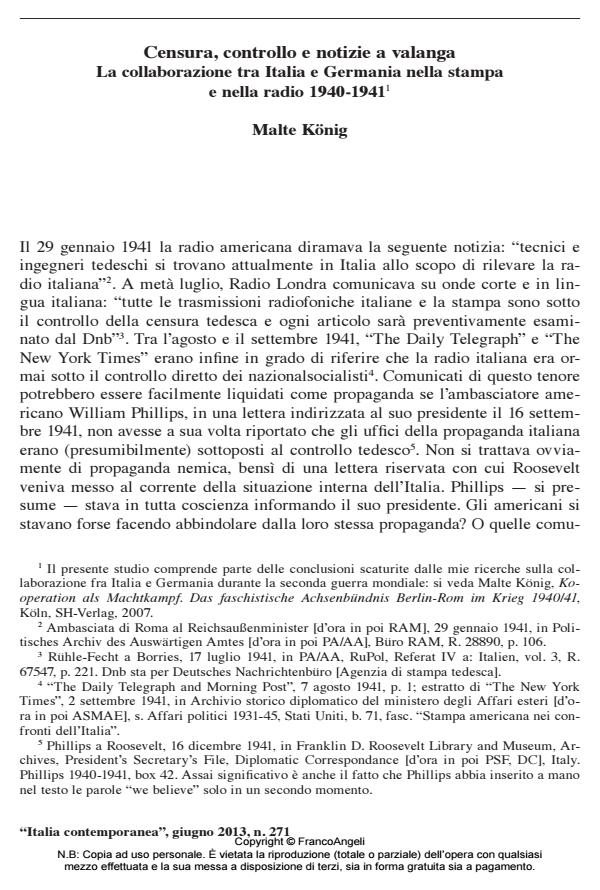Censure, control and flocking news. German-Italian collaboration in press and broadcasting 1940-1941
Journal title ITALIA CONTEMPORANEA
Author/s Malte Konig
Publishing Year 2013 Issue 2013/271
Language Italian Pages 23 P. 233-255 File size 341 KB
DOI 10.3280/IC2013-271003
DOI is like a bar code for intellectual property: to have more infomation
click here
Below, you can see the article first page
If you want to buy this article in PDF format, you can do it, following the instructions to buy download credits

FrancoAngeli is member of Publishers International Linking Association, Inc (PILA), a not-for-profit association which run the CrossRef service enabling links to and from online scholarly content.
During the whole WWII cooperation within the Rome-Berlin Axis suffered from mistrust and rivalry. Given this premise, the A. examines whether, how and to what extent the Nazis interfered in the Italian media control, reaching the conclusion that collaboration in the field of propaganda served them - not surprisingly indeed - to exert influence on the Fascist press and broadcasting system, but also that the net result fell widely short of what they expected. As in the economic and military fields, also in the information domain there emerged clearly enough inevitable difficulties in dealing with a partner no doubt inferior, but sovereign nonetheless: to a certain extent, press release allowed a bland conditioning, but most rarely could impose censure. Above all, a major cause of troubles was the divulgation of military secrets by the Italian media, in spite of the interventions of Pavolini and the Duce himself.
Keywords: WWII, Rome-Berlin Axis, Fascist press, Fascist broadcasting system, military secrets, Alessandro Pavolini
- Daniele Menozzi, Stampa cattolica e regime fascista, “Storia e problemi contemporanei”, 2003, n. 33. DOI: 10.1400/12610
Malte Konig, Censura, controllo e notizie a valanga. La collaborazione tra Italia e Germania nella stampa e nella radio 1940-1941 in "ITALIA CONTEMPORANEA" 271/2013, pp 233-255, DOI: 10.3280/IC2013-271003